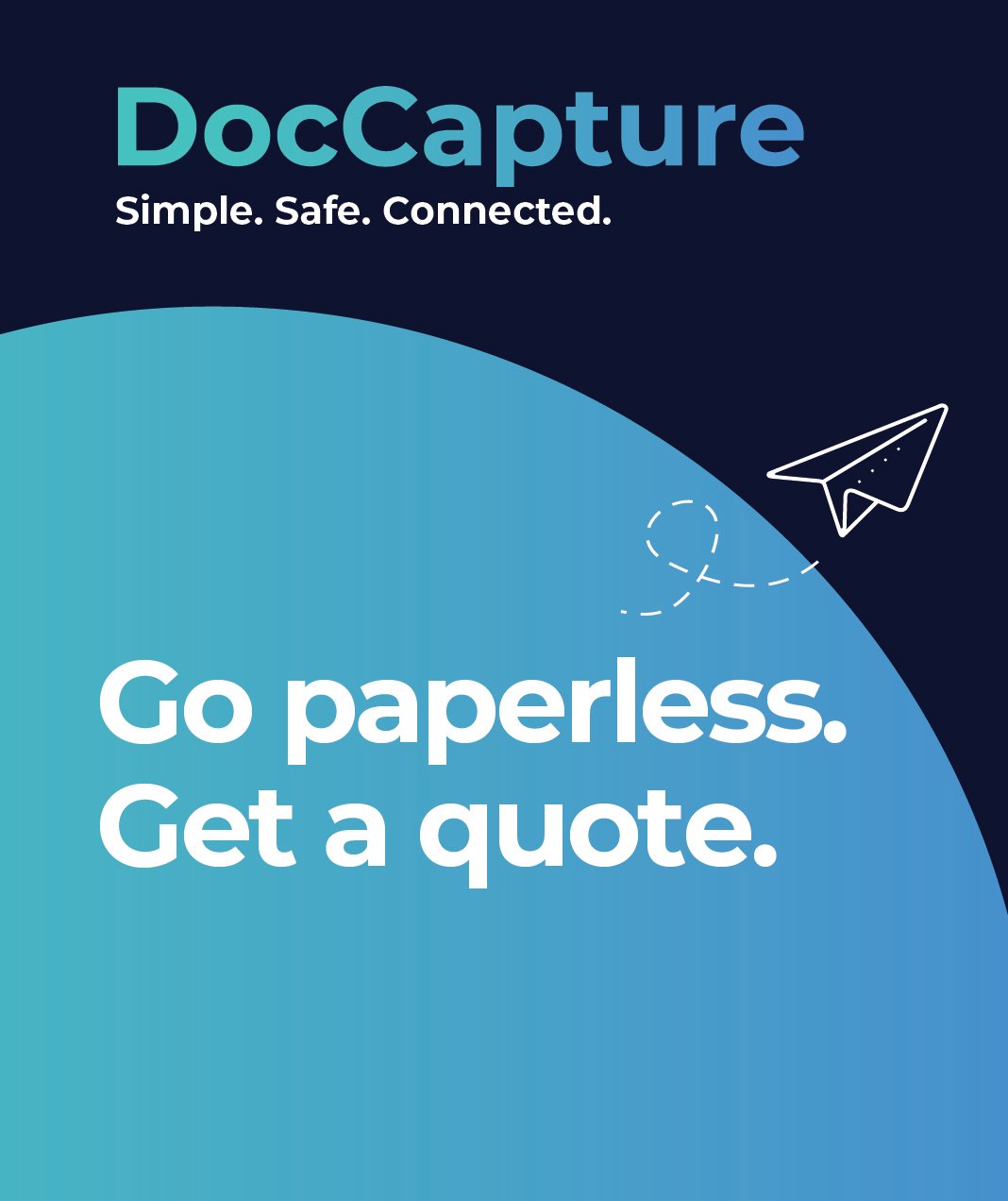The Strategic Advantage of Document Scanning in Risk Management
Table of contents
In the high-stakes world of financial services, data is both the foundation and the future. From loan agreements and investment reports to compliance audits and internal reviews, the flow of information drives every critical decision. Yet, many financial institutions still rely on paper-based records, leaving vital data vulnerable to loss, inefficiency, and compliance failures.
For risk-averse industries like banking, insurance, and investment management, this is more than an operational inconvenience—it's a strategic liability. Regulatory bodies such as the SEC, FINRA, and international frameworks like GDPR demand strict adherence to data handling standards. The margin for error is razor-thin.
Enter document scanning: a digital transformation tool that doesn’t just convert paper to pixels—it fortifies an institution’s entire risk management posture. By digitizing records, organizations gain secure, searchable, and centralized data access that supports compliance, enhances operational resilience, and empowers faster, more informed decision-making.
For senior decision-makers focused on security, integrity, and efficiency, document scanning isn’t just an upgrade—it’s a strategic advantage.
The Risk Landscape in Financial Services
Financial institutions operate under intense scrutiny, juggling regulatory oversight, complex data ecosystems, and rapidly evolving cyber threats. In this environment, the cost of a misstep is steep—data breaches, failed audits, and regulatory penalties can result not only in financial loss but also reputational damage.
Common risks include:
-
Data Breaches: Paper documents are inherently insecure—easily lost, stolen, or exposed through improper storage.
-
Audit Failures: Incomplete or inaccessible records can derail audits and trigger costly investigations.
-
Compliance Penalties: Delayed or incorrect reporting due to disorganized data can lead to violations of SEC, FINRA, or GDPR regulations.
-
Operational Disruptions: Paper-based workflows are slow and error-prone, hindering business continuity in high-pressure situations.
Manual, paper-based processes exacerbate these risks. A misplaced document or a manual entry error can cascade into systemic failures. Without digital controls, financial institutions face significant blind spots in their data governance strategies.
To dive deeper into how outdated document handling impacts regulatory standing, see The Role of Document Scanning in Financial Services Regulation.
Document Scanning as a Risk Management Tool
Transitioning from paper to digital documents is more than a convenience—it's a proactive risk mitigation strategy. By digitizing records, financial institutions gain control over data accuracy, availability, and reliability in ways that paper-based systems simply cannot match.
Improved Data Integrity
Manual document handling introduces human error—misfiled documents, lost paperwork, and data inconsistencies. Document scanning automates and standardizes information capture, ensuring consistency and accuracy across records.
Enhanced Accessibility and Response Times
Digitized documents are instantly searchable and accessible across departments, allowing for quicker responses to audits, regulatory inquiries, or internal investigations. In regulated sectors, speed and precision are critical.
Real-Time Data Availability
Digital documents support real-time data availability, empowering teams to act quickly and confidently. Whether responding to a compliance request or executing a strategic shift, access to current data is key to operational resilience.
For a closer look at the time and cost efficiencies digital scanning provides, explore How Scanning Documents Can Save Financial Institutions Time and Money.
Security: Digital Documents vs. Paper
For security-conscious financial leaders, the transition from paper to digital records often raises questions: Is digital truly safer? Can data be protected against evolving threats? The answer is a resounding yes—when done right.
Why Digital Is Safer
-
Encryption: Digitized documents can be encrypted both at rest and in transit, shielding sensitive data from unauthorized access.
-
Secure Backups: Cloud or off-site backups protect against physical loss due to fire, flooding, or theft—risks that paper files are highly susceptible to.
-
Audit Trails: Digital platforms record who accessed or modified a document and when, enhancing accountability and traceability.
Reducing Physical Risks
Unlike paper records that can be misplaced, misfiled, or destroyed, digital documents are protected by multilayered security protocols. Paper files stored in filing cabinets simply can't compete with role-based access controls and automatic version tracking.
Concerned about cloud data safety? Learn more about protections in place by reading Financial Records in the Cloud: Safeguarding and Accessibility.
Integration with Existing Financial Systems
A major hesitation among IT and compliance leaders is whether document scanning solutions can integrate with the institution’s existing infrastructure. The good news? Modern scanning platforms like DocCapture are built with interoperability in mind.
Seamless System Compatibility
DocCapture’s solutions are designed to integrate with a wide range of financial platforms, including:
-
Document Management Systems (DMS)
-
Enterprise Resource Planning (ERP) tools
-
Customer Relationship Management (CRM) platforms
-
Core banking and insurance systems
This ensures that scanned documents flow directly into the systems your teams already use—no disruption, no data silos.
Addressing Common Concerns
-
Data Migration: DocCapture provides structured migration services, ensuring that legacy paper records are accurately digitized and mapped to the right digital environments.
-
Compliance Mapping: Scanning workflows can be aligned with your specific internal governance policies and industry regulations.
By reducing friction and avoiding system incompatibilities, document scanning becomes a strategic enabler of digital transformation—not a bottleneck.
Strategic Gains Beyond Compliance
While risk reduction and compliance are top priorities, the benefits of document scanning extend far beyond regulatory checkboxes. For financial institutions navigating digital transformation, scanning serves as a catalyst for broader operational gains.
Long-Term Cost Savings
-
Reduced Storage Needs: Eliminating physical filing systems lowers real estate and administrative costs.
-
Minimized Manual Labor: Automated workflows reduce the need for data entry and document retrieval efforts.
-
Decreased Audit Prep Costs: Quick digital access slashes the time and labor needed to prepare for audits.
Enhanced Operational Efficiency
Digitized records streamline cross-department collaboration. Whether it's a loan officer, compliance analyst, or claims adjuster, teams access the same accurate, real-time data—boosting productivity and decision speed.
Competitive Edge
Financial institutions that embrace document scanning position themselves as forward-thinking and resilient. With digitization underpinning everything from client onboarding to regulatory response, these organizations are better equipped to innovate, adapt, and lead.
For more details on operational benefits, read How Scanning Documents Can Save Financial Institutions Time and Money.
Conclusion
In the financial world, risk is inevitable—but unmanaged risk is unacceptable. By adopting document scanning, banks, insurance companies, and investment firms can transition from reactive to proactive risk management. Digital documents deliver more than just convenience—they strengthen compliance, safeguard sensitive data, and enable smarter, faster decisions.
DocCapture understands the regulatory demands and operational complexities that financial institutions face. That’s why our tailored Financial Document Scanning solutions are built for resilience, security, and strategic impact.
Ready to turn your document liabilities into digital assets? Fill out our Get a Quote form today and take the first step toward secure, efficient document transformation.
Share this
You May Also Like
These Related Stories

The Role of Document Scanning in Financial Services

Mitigating Data Security Risks with Document Scanning Solutions

